Longhorn Beetles are a group of beetles belonging to the Family Cerembycidae which is one of the largest beetle families worldwide with 68 British members. There are about 20,000 species worldwide. They have characteristically long antennae which are used to find mates and places to nest. Many are colourful and some use warning colouration to deter predators.
Name: Golden-bloomed grey longhorn Agapanthus villosoviridescens
Description: A bristly beetle 18 - 20mm in length that has black and white banded antennae and a golden thorax and elytra.
Habitat: Typically seen in wet meadows and hedgerows where nettles, hogweed and cow parsley grow during May and June.
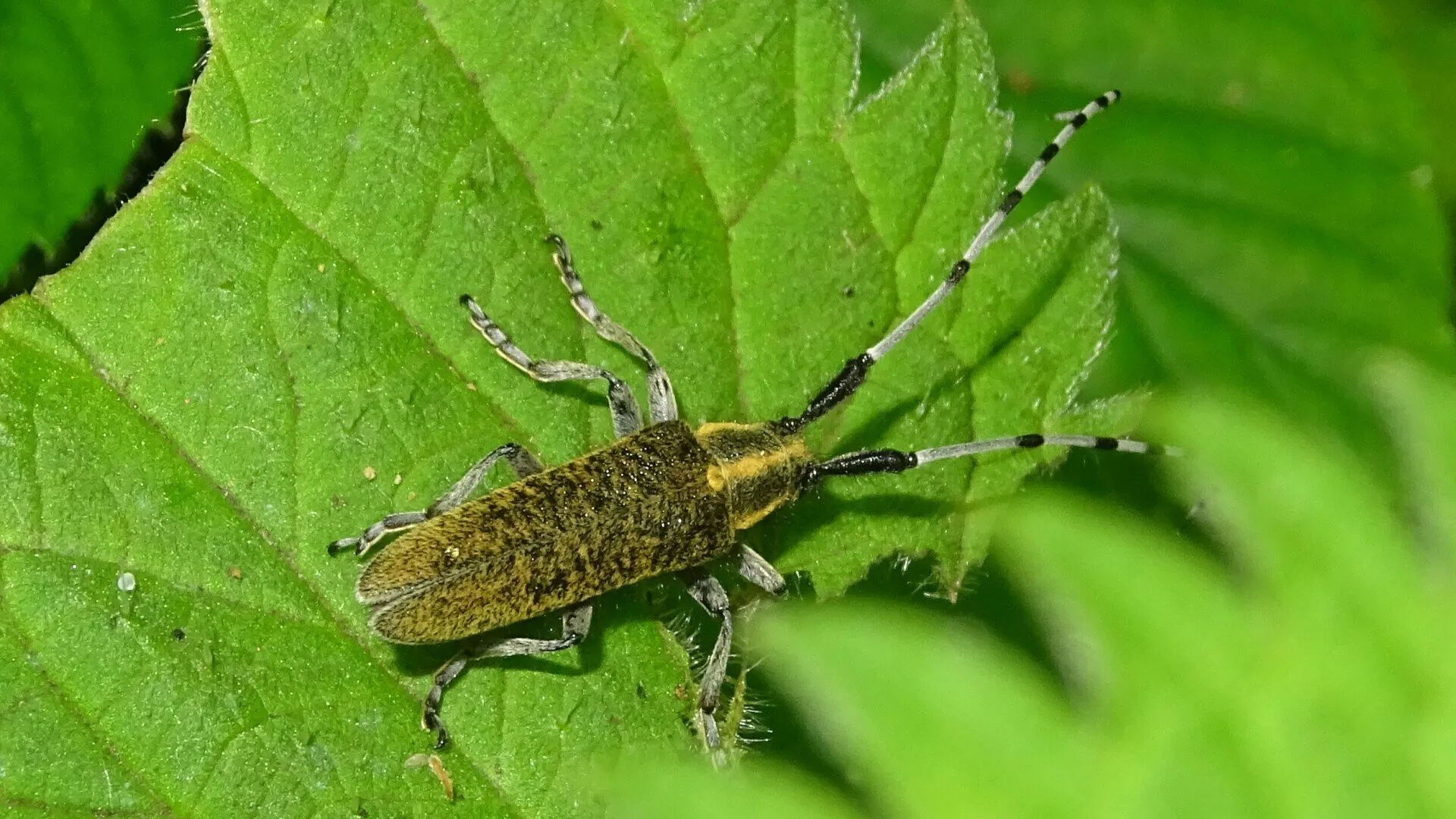
#
Name: Wasp beetle Clytus arietus
Description: Between 9 – 18mm length. This species uses mimicry to keep it safe from predators by making them think it is a common wasp. Apart from its black and yellow colouration the ruse is enhanced by using jerky movements when flying. It has orange-brown legs and antennae.
Habitat: Can often be found resting on hedgerows from May to July. Its larvae live in warm, dry, dead wood, with a preference for willow and birch.
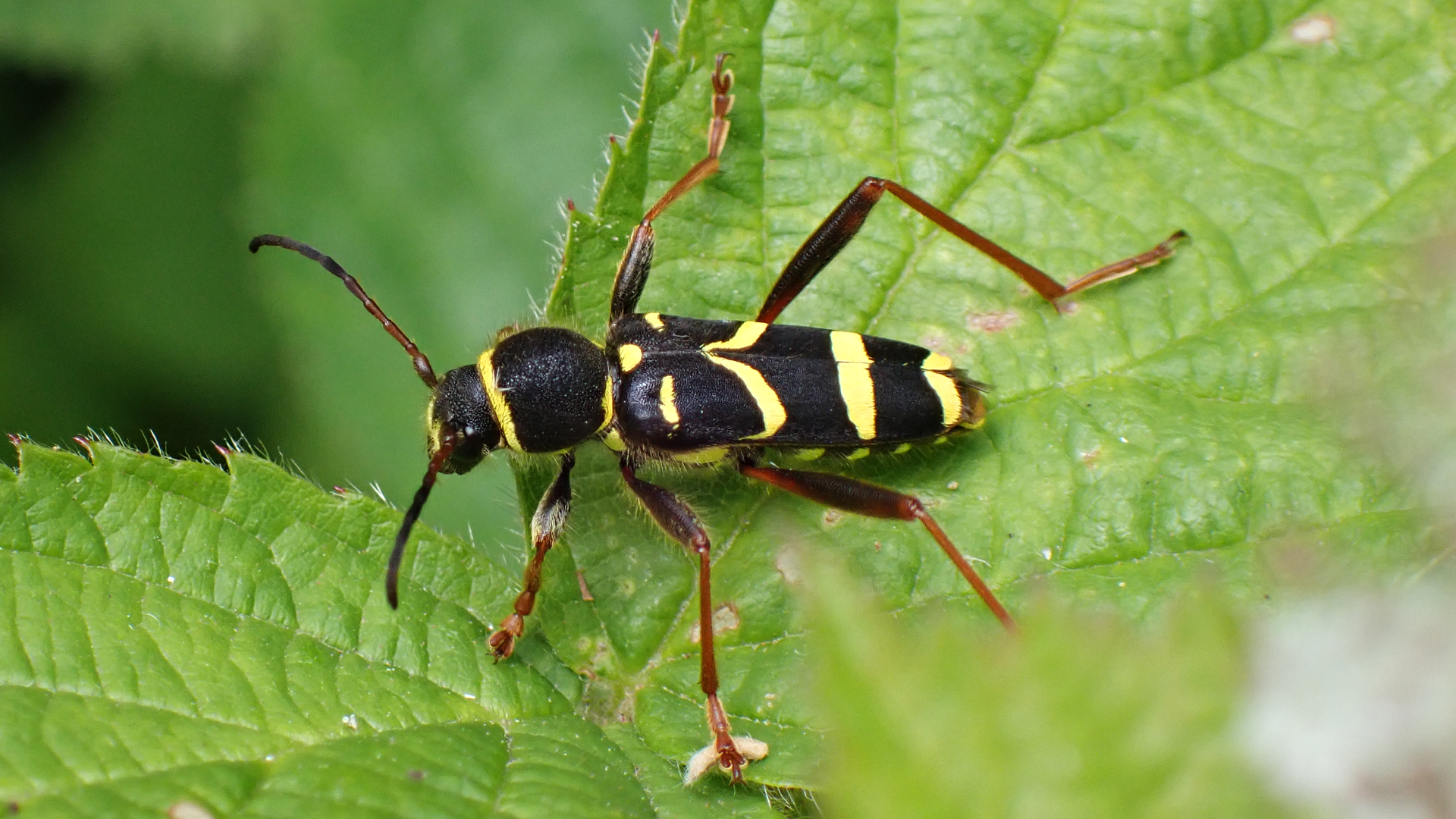
#
Name: Yellow and Black Longhorn Rutpela maculata
Description: Between 13 – 20mm in length. Yellow and black elytra.
Habitat:
Common beetle usually found on woodland hedgerows during June and July. Adults are active in warm weather feeding on nectar and pollen. The larvae live in moist decaying wood for 2-3 years with pupation occurring inside a cell formed in the wood. Adults are short-lived by comparison living only for 2-4 weeks.
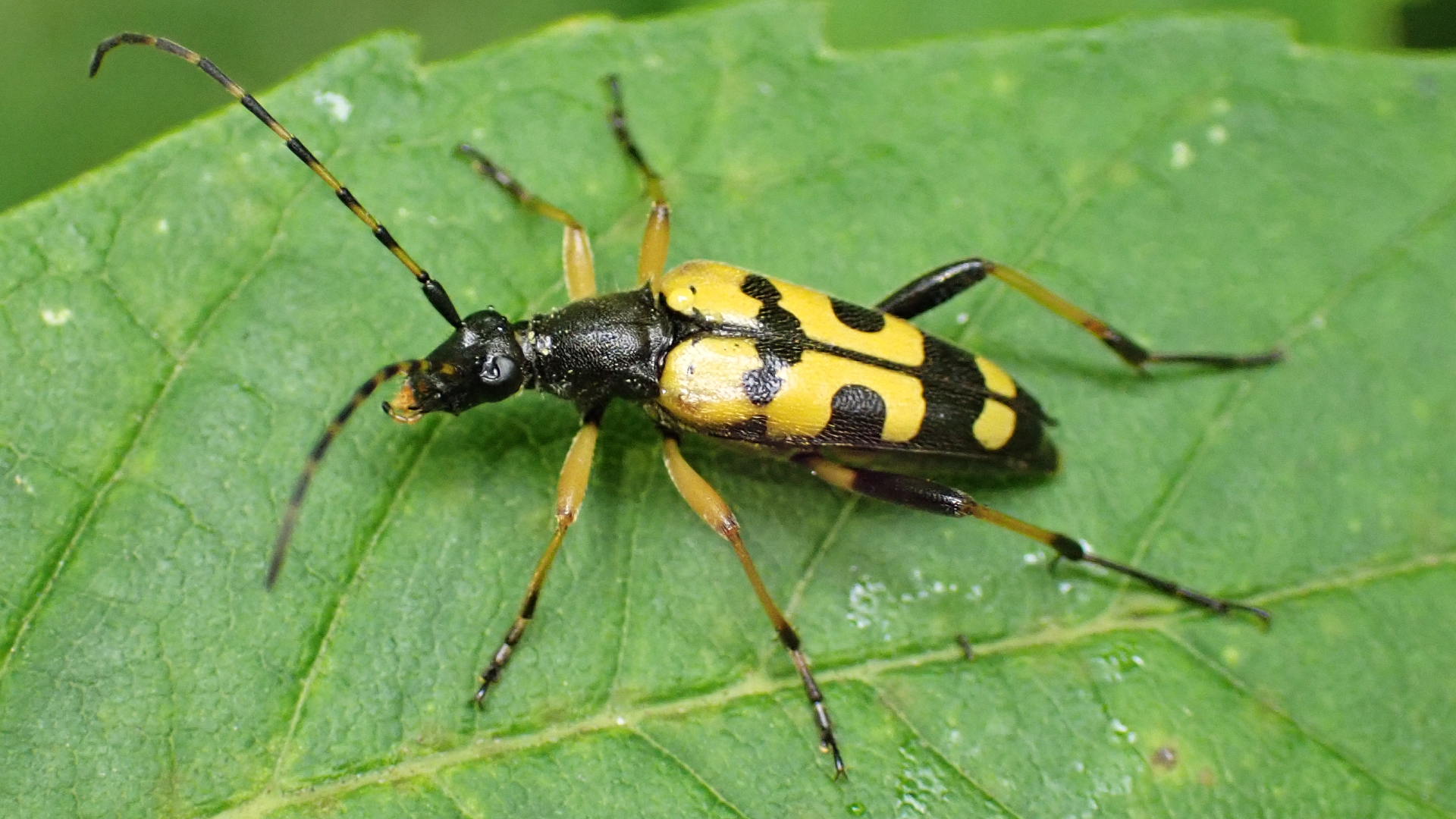
#
Name: Rufous-shouldered Longhorn Anaglyptus mysticus
Description: Up to 13mm length. This attractive longhorn beetle has distinctive reddish, black and white elytra. The thorax is grey or black.
Habitat: Frequents hedgerows along woodland paths especially where hawthorn grows. Its larvae burrow under bark producing galleries tightly packed with very fine wood dust. Larval development typically takes 2-3 years. Pupation occurs during autumn in a gallery excavated parallel to the wood grain with new adults start emerging around April.
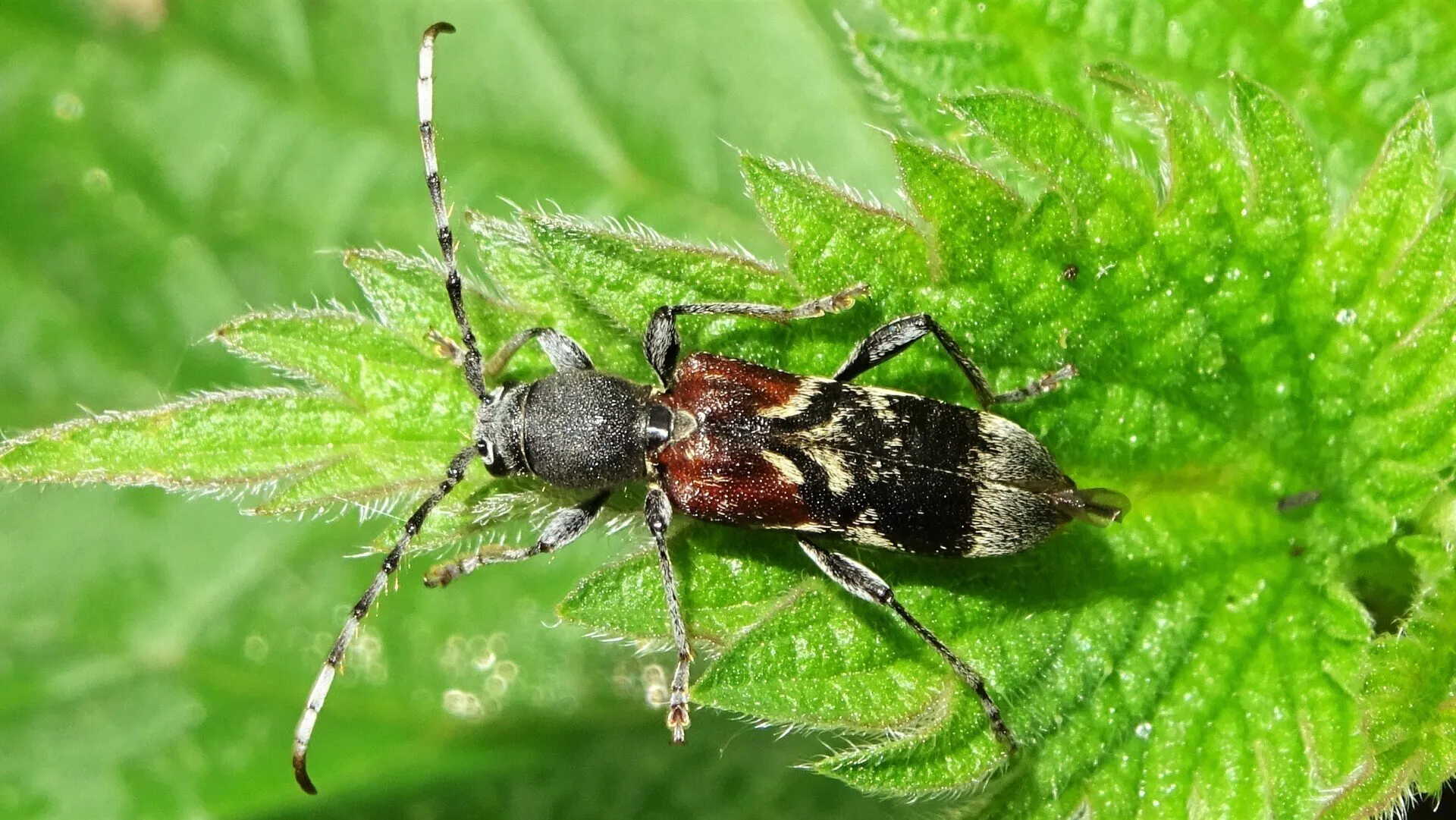
#
Name: Black-spotted Longhorn Rhagium mordax
Description: Between 13 - 22mm length. Yellow with brown and black mottling and two large black spots on the wing-cases. It has fairly short antennae for a 'long-horn' beetle.
Habitat: Found from spring until autumn on umbellifers, hawthorn and elder in wooded locations. After mating the females oviposit eggs in cracks of tree bark usually where the wood is soft and starting to rot. The larvae make shallow galleries under the bark seldom entering the tissue that carries water and dissolved minerals upward through the tree. The young take 2-3 years to develop before reaching adulthood.
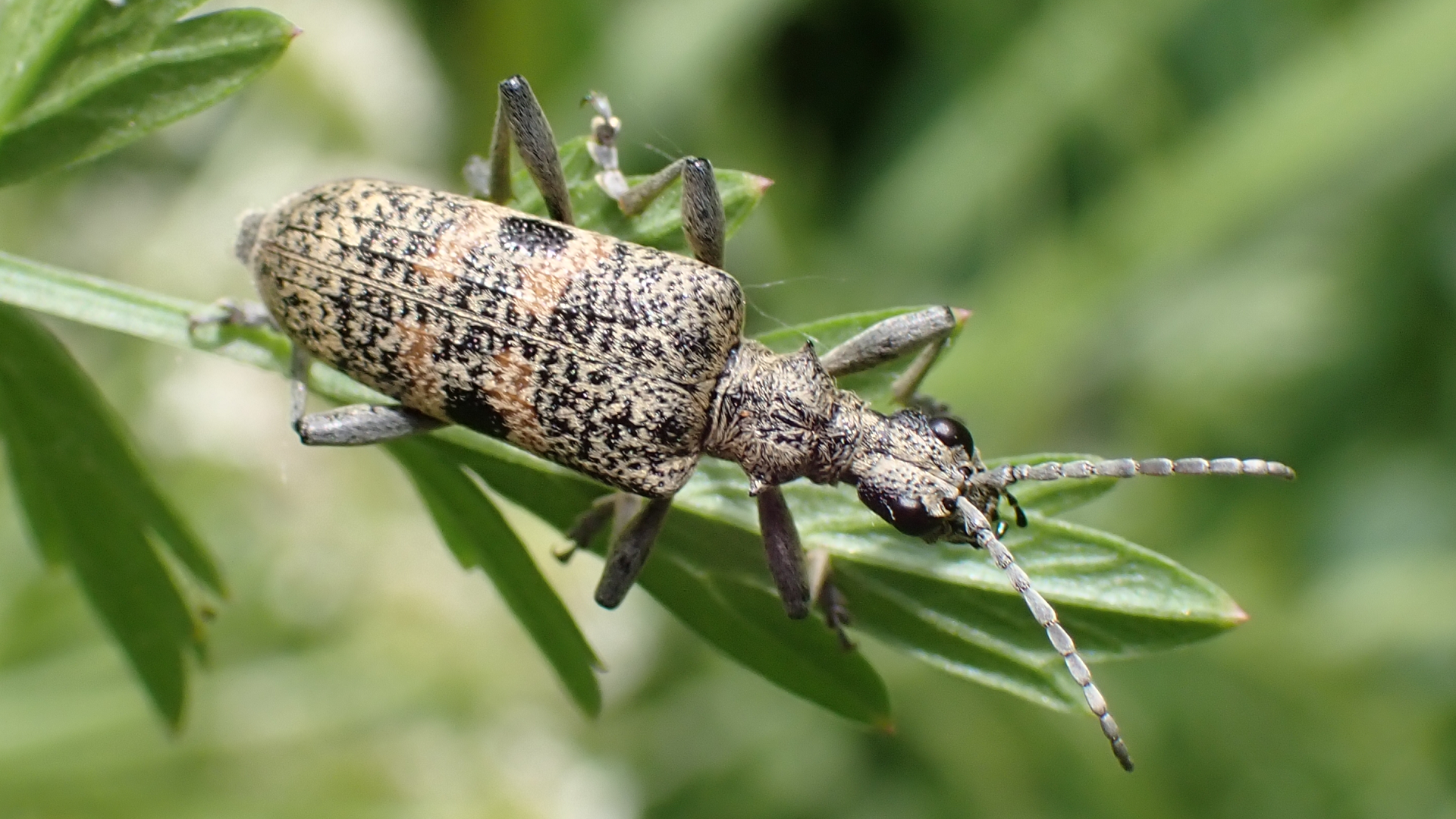
#
Name: Variable Longhorn Stenocorus meridianus
Description: Between 15 - 27mm length. Body colouration is variable hence the name.
Habitat: Prefers open or fragmented deciduous woodland with lots of marginal vegetation, often in locations exposed to the sun and supporting a range of flowers where they feed on pollen. Adults have a short season, typically June and July, although during warm weather they may become active from mid-May and sometimes persist until August. Mating mainly takes place on the ground or low on tree trunks.
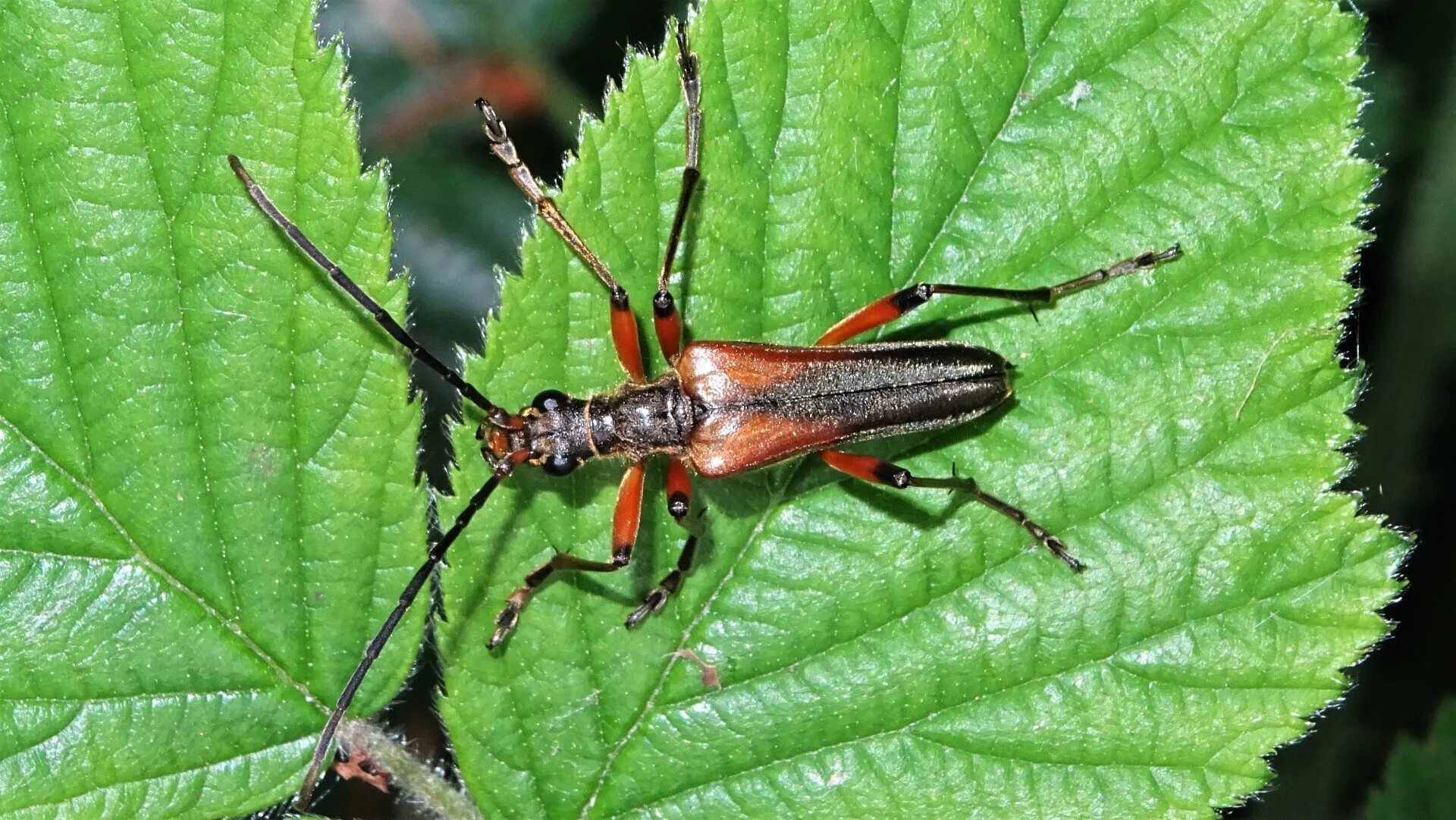
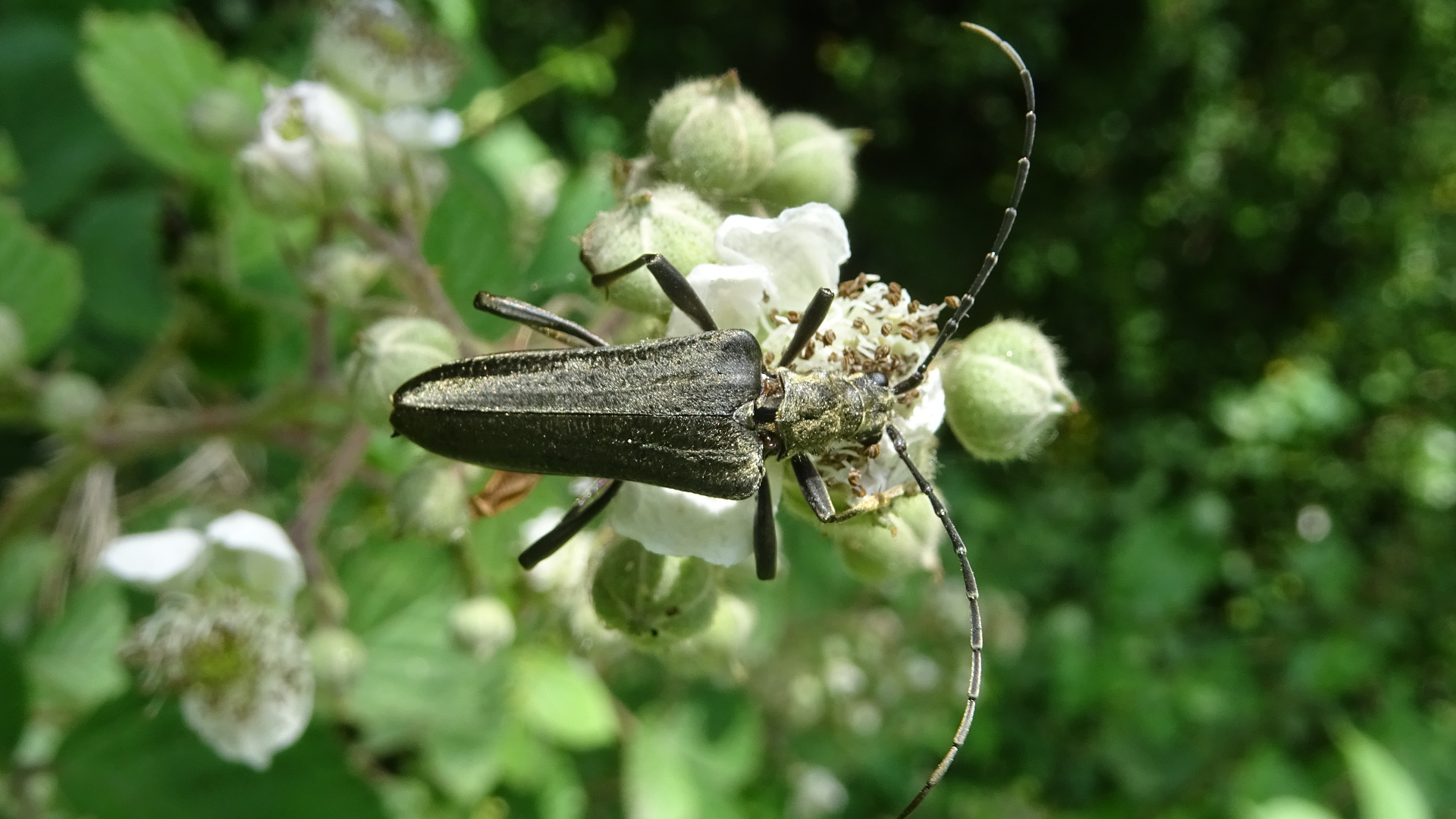
#
Name: Large Black Longhorn Stictoleptura scutellata
Description: About 20mm. Large and black.
Habitat: Rarely recorded and nationally scarce, but seems to have a foothold locally. Adults are usually active in June and July. The larvae develop in deciduous deadwood. Associated with beech forests.
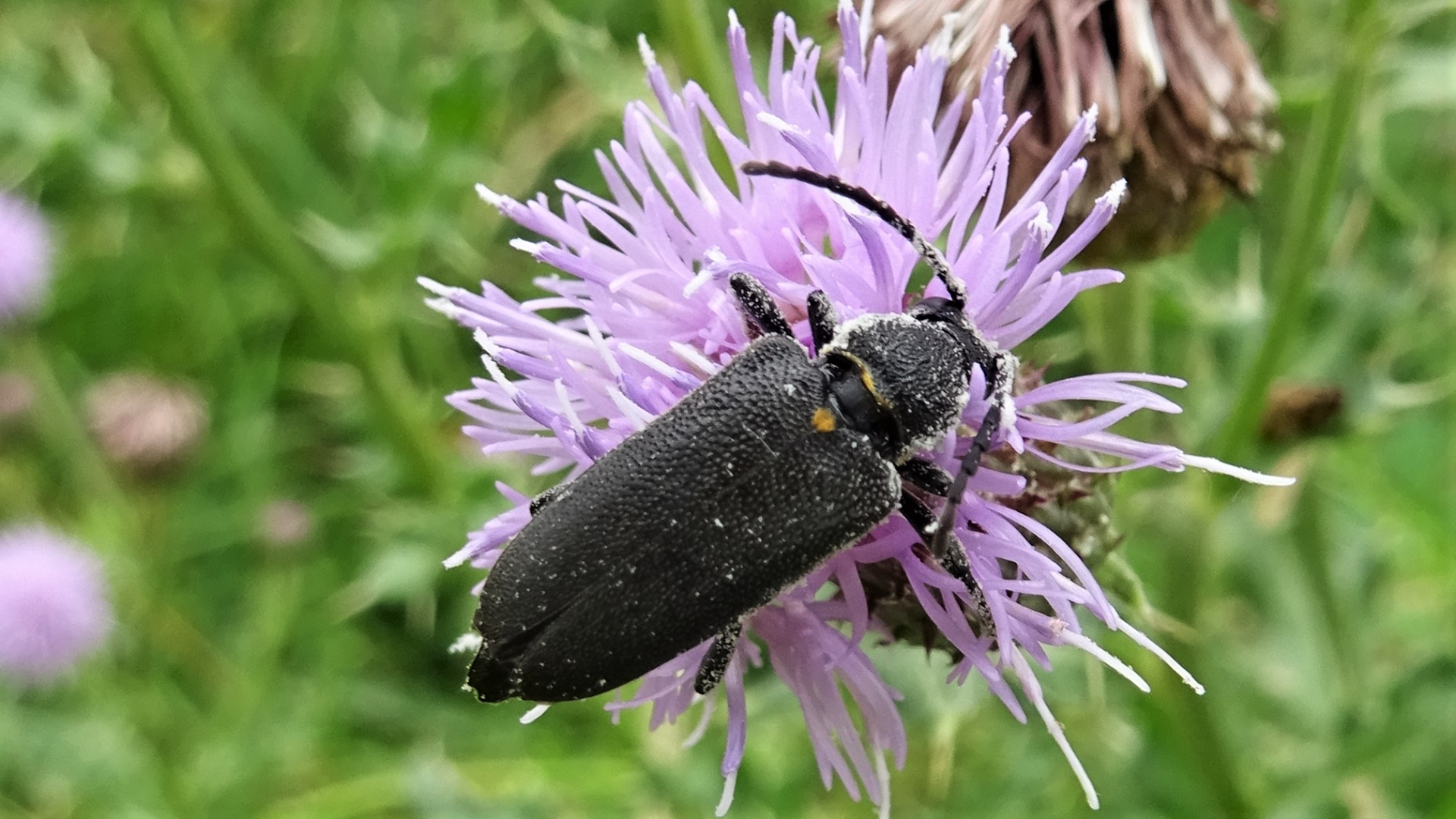
#
Name: Black-striped Longhorn Stenurella melanura
Description: Small, between 6 - 10mm. The brown elytra have a black stripe, the head and legs are black.
Habitat: Adults visit flower-heads on warm summer days. Females oviposit in dead wood and moist decaying timber. The larvae feed on dead twigs, branches and surface roots.
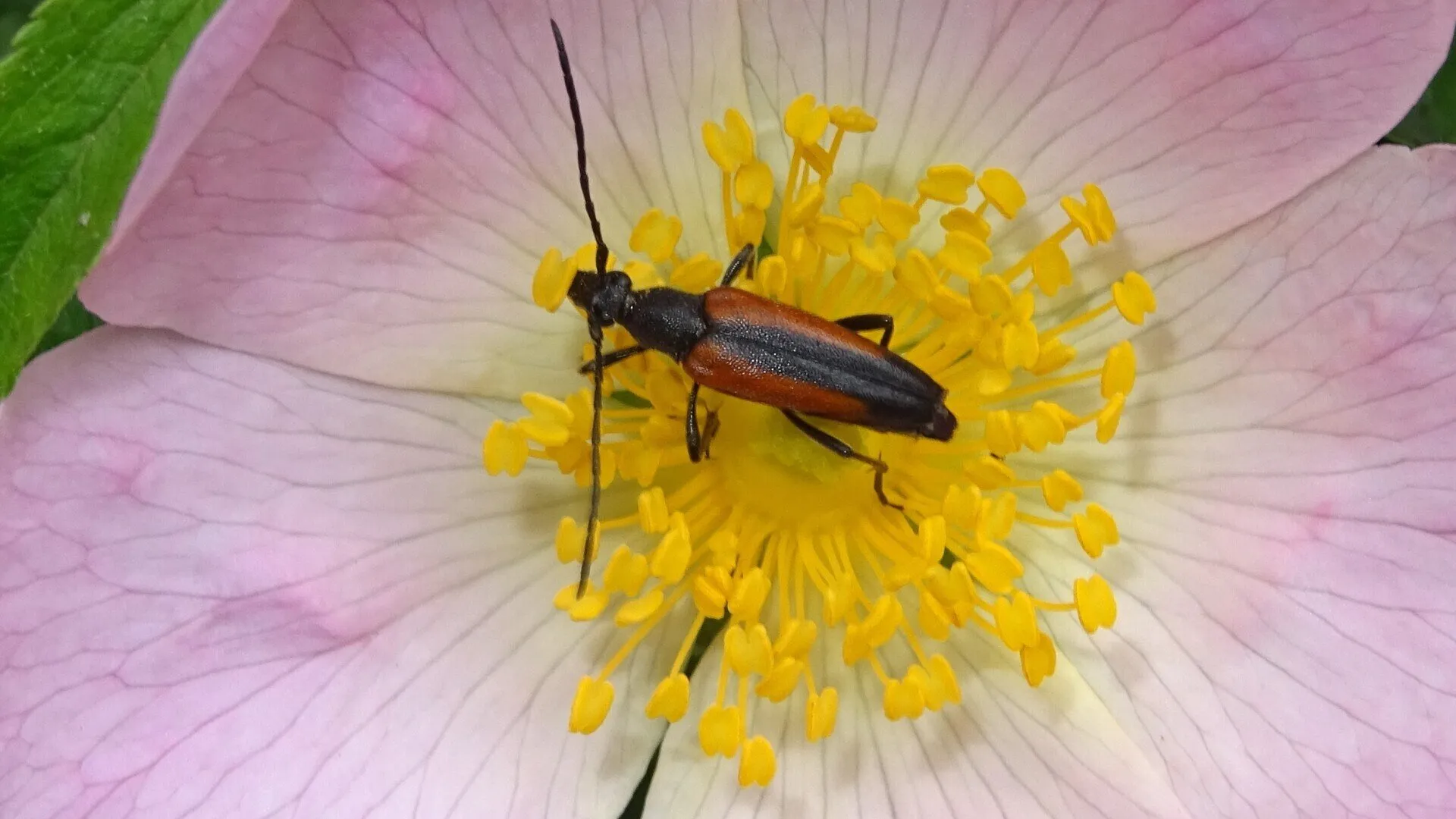
#
Name: Fairy-ring Longhorn Pseudovadonia livida
Description: Between 5 - 9mm in length. Brown elytra with dark legs.
Habitat:
Females lay eggs in humus rich soil where Fairy-ring mushrooms Marasmius oreades are present. Larvae normally take two years to develop. During autumn the larvae burrow down roughly 5cm into the soil where they overwinter to resume feeding in spring. Adults visit flower-heads of a range of plants including ox-eye daisies, buttercups, umbels and yarrow to feed on pollen and nectar.
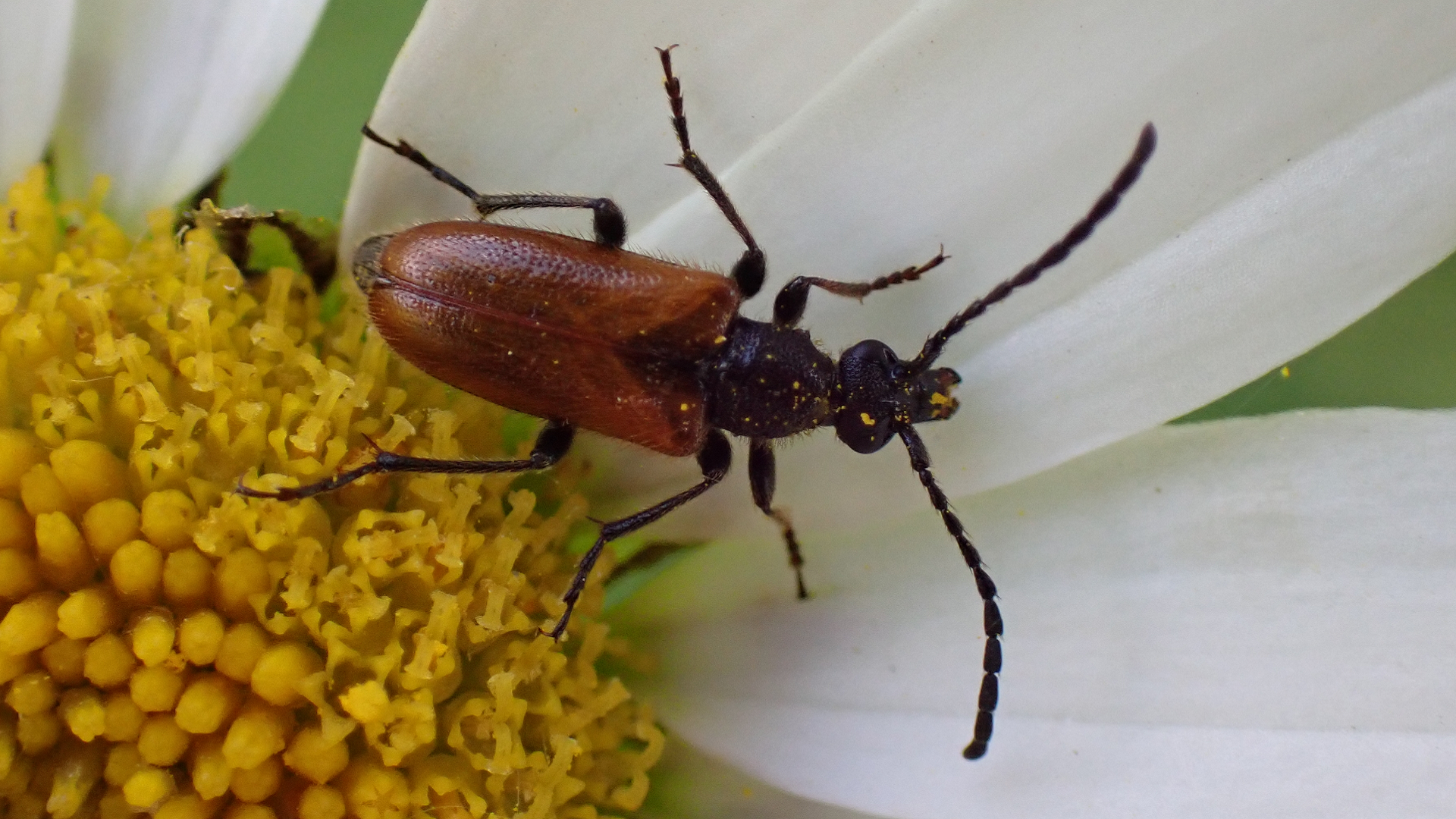
#
© hainaultforest.net. All rights reserved.

